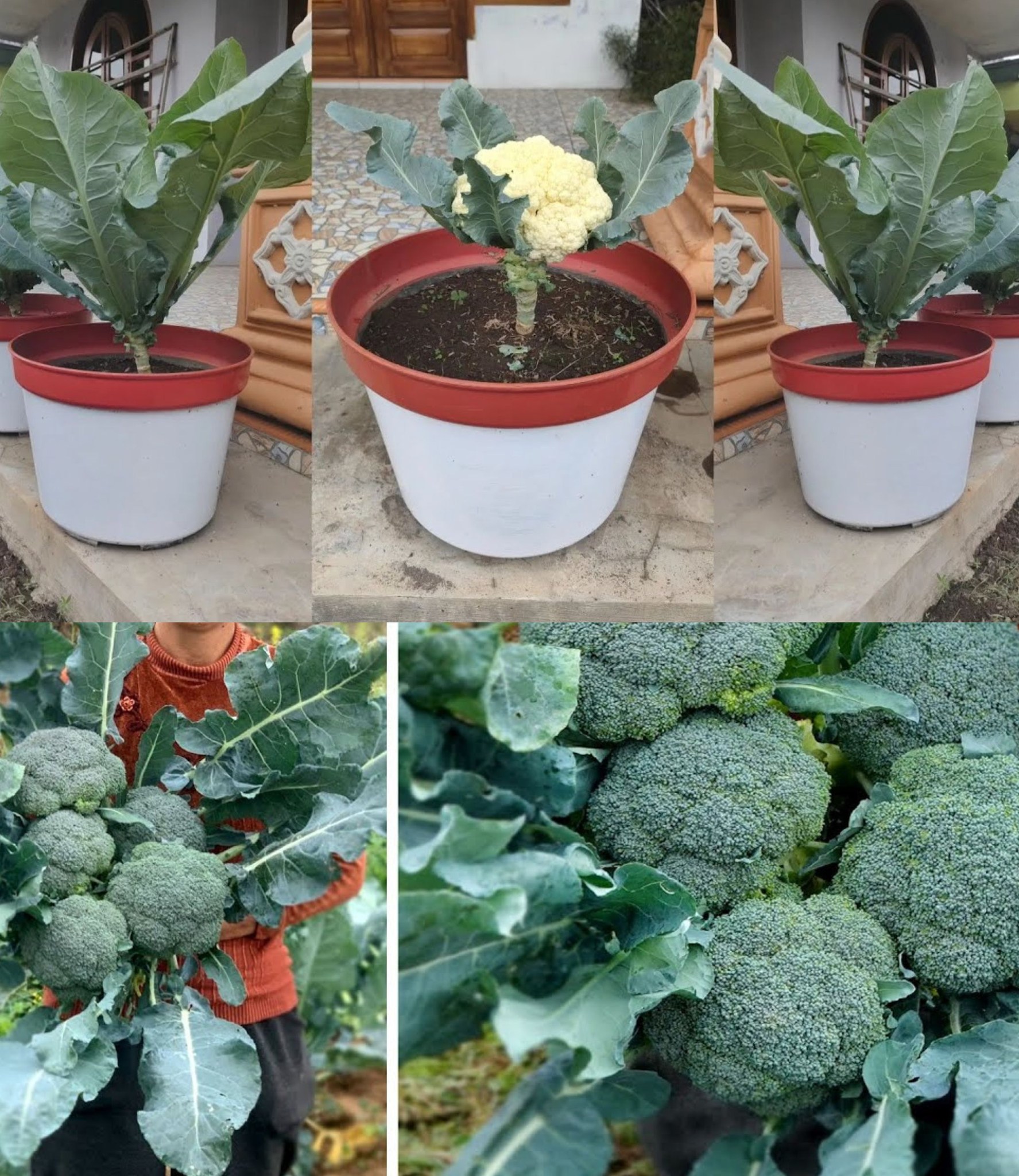
This Is The Vegetable My Whole Family Likes, Grow Clean Cauliflower At Home🌱
Growing clean cauliflower at home is a wonderful way to ensure a fresh and healthy supply of this nutritious vegetable for your family. Here’s a guide to help you cultivate clean and delicious cauliflower:
1. Choose the Right Cauliflower Variety:
- Select a cauliflower variety that is well-suited for your climate and growing conditions. Some varieties are more tolerant of specific weather conditions or pests.
2. Quality Seedlings or Seeds:
- Start with healthy cauliflower seedlings from a reputable nursery or grow your own from seeds. Ensure that the seedlings are disease-free and sturdy.
3. Ideal Growing Conditions:
- Cauliflower prefers cool temperatures. Plant it in a location that receives full sun but provides some shade during the hottest part of the day, especially in warmer climates.
4. Soil Preparation:
- Prepare well-draining, fertile soil with plenty of organic matter. Cauliflower requires a slightly acidic to neutral pH (around 6.0 to 7.0).
5. Planting Time:
- Plant cauliflower in the appropriate season. It’s often grown as a cool-season crop, so plant it in spring or fall, depending on your climate.
6. Proper Spacing:
- Follow recommended spacing guidelines for the specific cauliflower variety you’re growing. Adequate spacing promotes good air circulation and helps prevent diseases.
7. Watering:
- Keep the soil consistently moist, providing regular watering. Cauliflower prefers even moisture, so avoid letting the soil dry out completely between waterings.
8. Mulching:
- Apply a layer of organic mulch around the base of the cauliflower plants to conserve moisture, suppress weeds, and maintain a more consistent soil temperature.
9. Fertilization:
- Fertilize cauliflower with a balanced, all-purpose fertilizer. Follow the recommended application rates on the fertilizer packaging. Side-dress with additional fertilizer during the growing season if needed.
10. Pest Management: – Cauliflower is susceptible to certain pests like cabbage worms and aphids. Use natural remedies or insecticidal soap to manage pest issues.
11. Provide Support: – Depending on the variety, cauliflower heads can be heavy. Providing support, such as tying the outer leaves together over the developing head, can prevent the head from discoloring or developing unevenly.
12. Blanching: – Some gardeners practice blanching to protect the developing cauliflower head from sunlight, which can result in off-flavors. This involves gently tying the outer leaves over the head as it develops.
13. Harvesting: – Harvest cauliflower heads when they are firm, compact, and have reached the desired size. Cut the head from the plant using a sharp knife.
14. Successive Planting: – If you have the space, consider successive planting every few weeks to ensure a continuous harvest.
15. Storage: – Store harvested cauliflower in the refrigerator. To maintain freshness, store it in a perforated plastic bag.
By following these steps, you can grow clean and delicious cauliflower at home, providing your family with a fresh and nutritious addition to meals. Experiment with various cauliflower recipes to enjoy its versatility in the kitchen.
